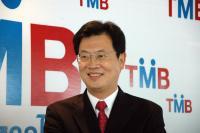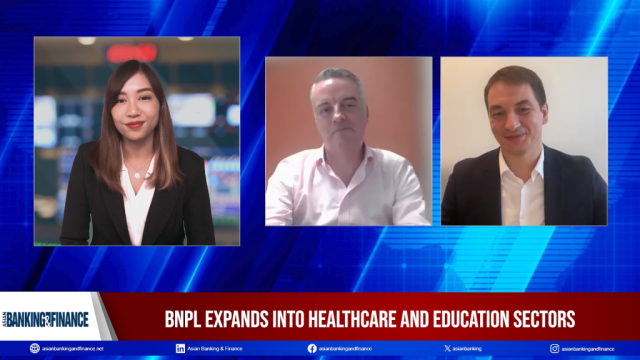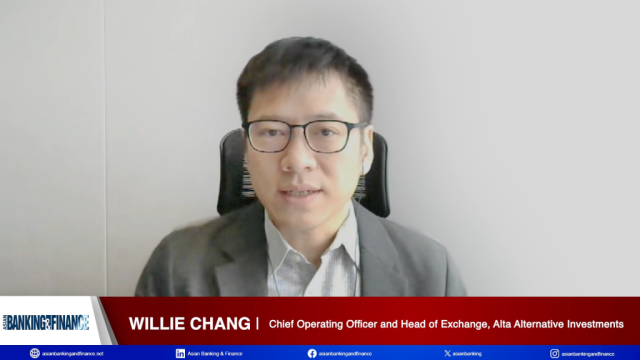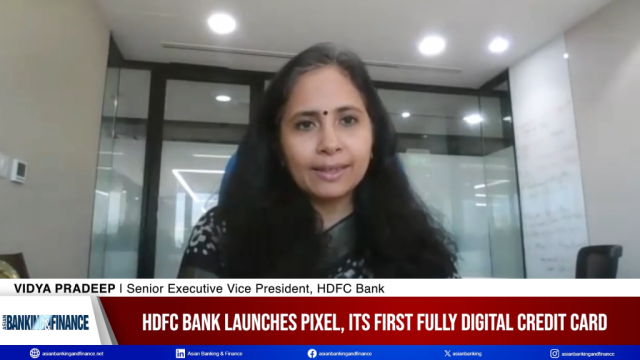
TMB Bank embraces new structure to satisfy more customers
Boontuck Wungcharoen, CEO of Thai Military Bank (TMB) speaks to Greg Lowe about the restructuring plans of the bank and its commitment to better service the Thai market amid crisis. Q: You started as TMB CEO in July, just before the financial crisis took hold. How has the ride been for you so far?
It is never dull. I see opportunities how TMB can differentiate itself from other Thai banks by providing better services to the market. There are a lot of untapped customers, consumers, retail; even things like wealth management that [doesn’t] really exist in the Thai market.
Q: TMB recently posted M908 profits of 4.41bn baht compared to 20.69bn baht losses in the year before. How can TMB continue this positive trend?
We recapitalised at the end of last year and cleared up the processing. But we haven’t really provided value services to customers yet. We are tightening the way that we run the bank and we’re in the process of building up the fundamentals that will allow us to introduce value quality services next year.
Q: How will Thai banks weather the current financial storm?
Thailand is to some extent quite lucky. Because of the political uncertainty in the past three years, businesses did not expand that much, most are operating at 70 to 75 percent capacity. Because the businesses weren’t expanding, banks weren’t lending. For the past couple of years bank loan growth here came mainly from the working capital. It wasn’t driven by expansion, so we weren’t really exposed to sub-prime.
Q: Thailand is being hit on two fronts, the global financial meltdown and domestic political turmoil. Is the banking sector robust enough to cope with these problems, and which is the biggest threat?
I think the financial crisis is the biggest problem. Obviously we will be impacted by the global slowdown, and the banks’ business going forward might not be as robust as in the past, but there will not be any major risks from what I can see.
In the Thai market, loan growth is about 1.5 to 2.0 times GDP growth. So if GDP next year is between 3.8 to 5.0 percent, then loan growth will slow. Our growth prediction is pretty much in line with BOT’s 3.8 to 5.0 percent forecast.
Q: How is TMB planning to build its market share?
I started July 14 and we’ve already changed the organisation structure to be more customer-centric. That means having a clear retail division that serves retail customers, SME serves SME, wholesale serves the wholesale, and so on.
More importantly the rest of the organisation must be able to see how the way they work has to connect to satisfying customers. We start with the new structure on January 1 next year.
Q: What do you mean by customer-centric? Will the long queues and customer-unfriendly experiences typical of Thai banks be a thing of the past?
TMB customers will be able to use any branch. They can also access other service channels, such as online or telephone banking.
What exactly customer-centric is depends on the customer in each segment. Each segment has different financial service needs, whether they are mass or middle-income customers, small SMEs or large corporations.
The behaviour and lifestyle of customers in each segment is quite different. For example, we will provide businesses with financial solutions, not only lending and loans, but also transactional banking, risk management and investments, bundled as a solution to enhance their enterprise values.
Q: What are your upcoming service development and branch expansion plans?
We currently have 470 branches. In the next three years we will open another 200-300 branches. They will be different to the existing branches in terms of the look and feel, and services.
Currently a branch is a small bank. Meaning the branch takes deposits, makes loans to every customer, from consumers all the way to the big businesses. They also have some processing there.
From January 1 it will be totally different. We will take all the back office and processing out. Branches will only be selling the consumer products, mortgages, mutual funds, personal loans, and services for every sector.
For SMEs, we will set up about 40 regional offices, with each SME office taking care of the customers in about 10 branches.
Q: You recently launched M-Banking mobile phone services. Can you explain how this works and what differentiates it from the other banks’ offerings?
Other local banks have done it, but I think we are the best, quality-wise. You can use the mobile phone for account enquiries, money transfers, bill payments and so on.
The system generates an SMS to alert the receiver of the funds. It’s more or less like Internet banking but on the phone. The difference is that our system can work with any mobile phone service provider. We have about 40,000 Internet banking customers. M-Banking has only just launched, but for every ten people in Thailand who own a mobile phone only three have a PC. So we see mobile phone banking as a key growth area. The features are very user-friendly, and it works on any phone that has GPRS.
Q: What processes are you going through to ensure the new format TMB really understands its customers?
The structure is to have people with in-depth understanding responsible and accountable for customers in each segment. For the millions of mass-market customers, we need to use data-mining techniques. We can capitalise on INGs knowledge and experience from ING Direct, a direct marketing bank with no branches. We already have all of the IT here, and with ING’s support, I think we can move faster than other local banks.
Q: Looking at ING, it owns 30 percent of TMB with 25 percent voting rights. In the light of the recent Dutch government bailout of the bank, will ING still be able to finance TMB?
ING has confirmed its strong commitment to TMB. It sees Thailand as a high-growth market with many opportunities for developing financial services. The commitment is there for the banking, insurance and asset management businesses.
Q: Earlier this year TMB sold its 51 percent stake in TMB Macquarie Securities (Thailand). How do you feel about making the move having seen stock markets crash around the world?
We could claim that we saw it coming, but no. It was just the right business decision at the time. We still want to have a securities company but it, or any other financial service we offer, has to be driven from a customer-needs perspective. That would dictate what kind of subsidiary we would have, rather than having it just for the sake of investment.
Q: Do you plan to merge TMB Asset Management and ING Funds?
This has been talked about for some time, but I see their individual strengths working better by maintaining each brand. Both are very strong brands. ING Funds is more sophisticated, TMB AM is very convenient. We are the first, and currently the only, Thai bank to offer limited open architecture to customers. Meaning any TMB branch can already offer customers both brands.
Q: You have previously said that TMB wants to grow its share of the loan market to 15 to 20 percent in the next three years, predominantly through SMEs. How is that achievable with the current global credit freeze?
Currently we have seven to eight percent of the market share. We want to build that to 14 percent over the next three years by deposit-led growth. It has to be through quality deposits. Meaning half of it has to be from current accounts and savings accounts. Typically banks will set the business target on the loan growth because it is very easy. Lending money is not that difficult. But we are setting the business target on a deposit growth of seven to 14 percent in three years. You cannot simply grow deposits without providing good services and financial solutions that include loans. Loans will grow as part of the solutions we provide in every segment.
Q: Bank of Thailand says 2009 will be a tough time for the Thai economy on a number of levels, and banks need to exercise caution over giving loans.
How will this effect your loan growth targets?
To begin with I don’t think the Thai market is that bad. The economy could slow down, but 3.8 to five percent GDP is still growth. Fundamentally, we have not expanded that much in the past three to four years. So we’re not in the same situation as South Korea, which expanded rapidly with most banks funding themselves through wholesale dollar borrowing. The major risk is not there. If we can provide good services, good customers will come to us. That means we will have the opportunity to select the better lower-risk customers. Most other Thai banks have problems due to service issues. The top tier of customers will always be able to obtain credit lines at any time, to grow you loans business you need to attract these customers which is what we do.























 Advertise
Advertise







